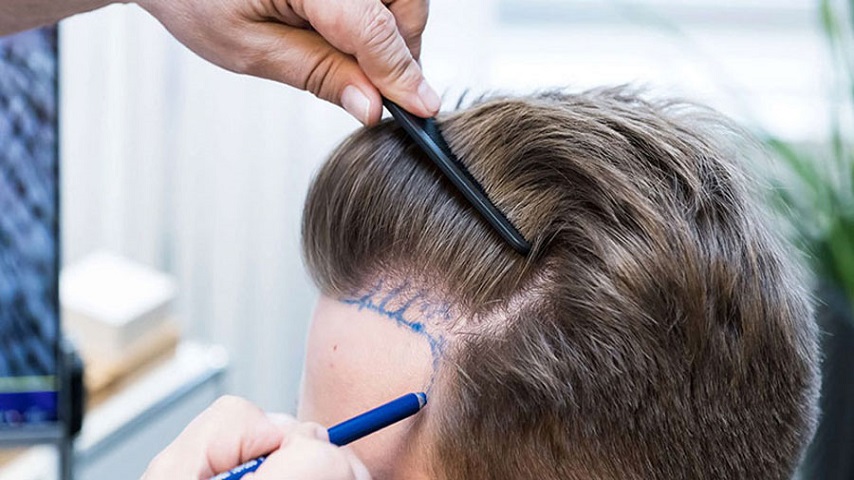Hair loss can be a challenging experience for many, leading individuals to seek effective solutions like hair transplants. However, understanding the hair transplant cost(تكلفة زراعة الشعر) is crucial for making informed decisions. This comprehensive beginner’s guide breaks down the factors affecting costs, what to expect, and tips for managing expenses.
What Influences Hair Transplant Cost?
The hair transplant cost can vary significantly based on several factors. Understanding these can help you gauge what you might need to budget.
1. Type of Procedure
There are primarily two types of hair transplant procedures: Follicular Unit Transplantation (FUT) and Follicular Unit Extraction (FUE).
- FUT involves removing a strip of scalp and then dissecting it into grafts. This method often costs less than FUE but leaves a linear scar.
- FUE involves harvesting individual follicular units from the scalp. This method is generally more expensive due to its complexity and the precision required.
The choice between these procedures significantly impacts the hair transplant cost.
2. Number of Grafts Needed
The extent of hair loss determines how many grafts you’ll need. On average, one graft can contain 1-4 hairs. The more grafts required, the higher the overall cost.
- A typical transplant may range from 1,500 to 3,000 grafts.
- Costs per graft can range from $3 to $10, depending on the clinic and location.
3. Clinic Location
Geographical location plays a vital role in determining costs.
- Clinics in major cities or affluent areas often charge more due to higher overhead costs.
- Conversely, clinics in smaller towns may offer lower prices, making it worthwhile to explore options beyond your immediate area.
4. Surgeon’s Experience
The expertise of the surgeon can also influence the hair transplant cost. Highly experienced surgeons typically charge more due to their track record and skills.
- Look for board-certified professionals with positive reviews and before-and-after photos of their work.
Investing in a reputable surgeon can lead to better results, potentially saving money in the long run.
5. Technology Used
The equipment and technology used during the procedure can affect costs.
- Advanced techniques, such as robotic-assisted hair transplants, often come with a higher price tag.
- While these technologies can enhance precision and reduce recovery time, it’s essential to weigh the benefits against the costs.
Average Hair Transplant Cost
Now that we’ve covered the factors influencing costs, let’s look at the average hair transplant cost.
- In the United States, the average cost for a hair transplant typically ranges from $4,000 to $15,000.
- In other countries, like Turkey and India, prices can be significantly lower, often ranging from $1,500 to $3,500 for similar procedures.
Hidden Costs to Consider
When budgeting for a hair transplant, it’s essential to consider hidden costs that may arise:
1. Consultation Fees
Many clinics charge for initial consultations, which can range from $50 to $200.
- Some clinics may waive this fee if you proceed with the procedure.
2. Post-Operative Care
Post-operative care may include medications, follow-up visits, and hair care products.
- These additional expenses can add $200 to $1,000 to your total costs.
3. Travel and Accommodation
If you choose to have the procedure done in another city or country, factor in travel and accommodation costs.
- These can significantly impact your overall budget.
Financing Options
The hair transplant cost can be daunting, but several financing options are available to help manage expenses.
1. Payment Plans
Many clinics offer payment plans, allowing you to spread the cost over several months.
- This option can make the procedure more affordable without compromising on quality.
2. Medical Financing
Consider looking into medical financing companies that specialize in cosmetic procedures.
- These companies often offer competitive interest rates and flexible repayment terms.
3. Health Savings Accounts (HSAs)
If you have an HSA or Flexible Spending Account (FSA), you can use these funds to cover some or all of the hair transplant cost.
- Check with your provider to see what expenses are eligible.
Preparing for Your Hair Transplant
Once you’ve decided to proceed, preparation is key to a successful outcome.
1. Research Clinics
Take the time to research multiple clinics and read reviews from previous patients.
- Look for clinics with a proven track record of successful procedures and satisfied patients.
2. Schedule a Consultation
During your consultation, discuss your goals, concerns, and budget.
- Be upfront about what you can afford and ask the surgeon about the most cost-effective options.
3. Follow Pre-Operative Instructions
Your surgeon will provide specific instructions to follow before the procedure.
- These may include avoiding certain medications, alcohol, or smoking.
Following these guidelines can lead to a smoother recovery and better results.
Aftercare and Maintenance Costs
Post-operative care is crucial for ensuring optimal results.
1. Follow-Up Visits
Most clinics schedule follow-up visits to monitor healing and hair growth.
- These visits may be included in the initial cost or charged separately.
2. Hair Care Products
Using specific shampoos, conditioners, and medications is often recommended after surgery.
- These products can help maintain hair health and may add to your ongoing costs.
3. Future Procedures
Some individuals may require additional sessions to achieve desired results.
- Keep this in mind when considering the overall hair transplant cost.
Realistic Expectations
It’s important to have realistic expectations about the results.
- Hair transplants do not provide immediate results; it can take several months for new hair to grow.
- Understanding the timeline and potential for hair growth can help set realistic goals.
Conclusion
Navigating the hair transplant cost can feel overwhelming, but with the right information, you can make informed decisions.
By understanding the factors that influence costs, exploring financing options, and preparing adequately, you can take the first steps towards regaining your confidence through hair restoration.
